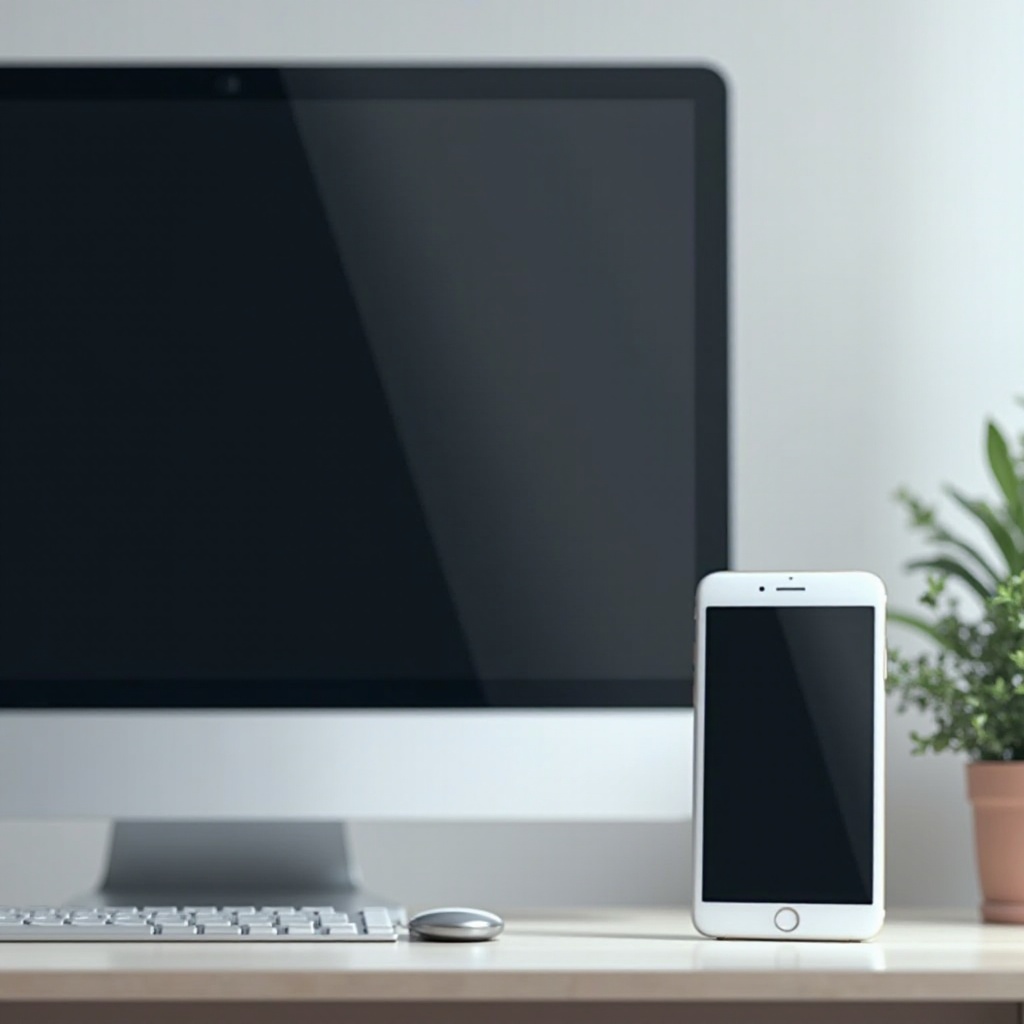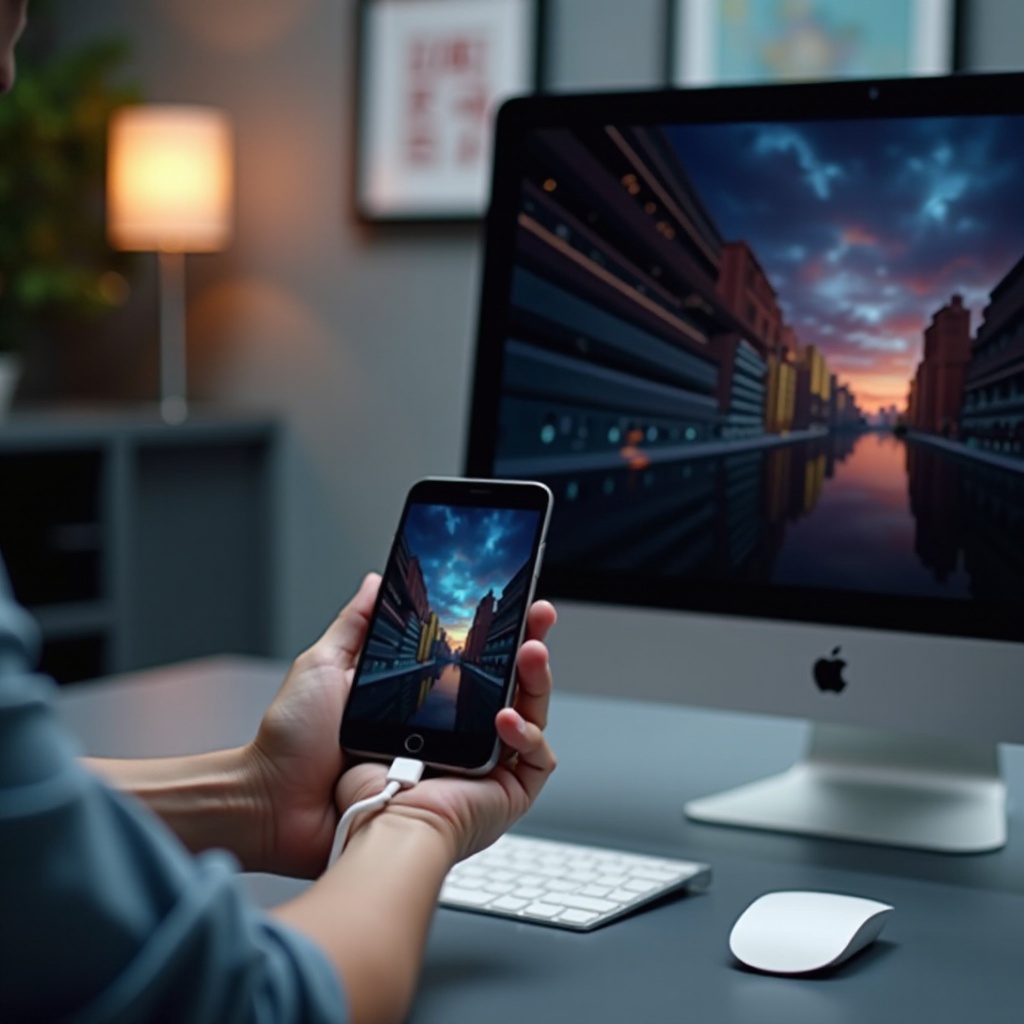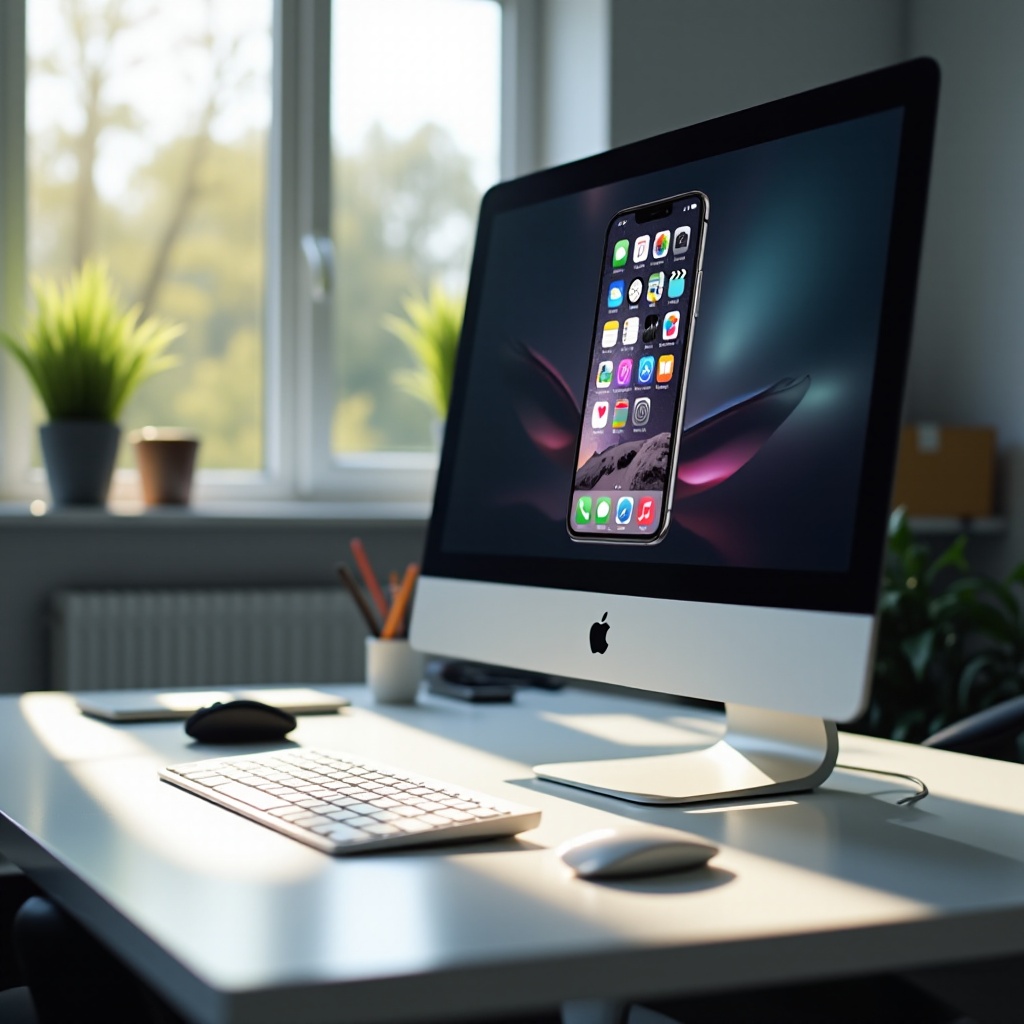Introduction
Connecting your iPhone screen to a computer is incredibly useful for presenting, recording, or troubleshooting technical issues. This guide will walk you through simple, yet effective methods to project your iPhone screen onto a computer, whether you’re using Apple’s built-in features or third-party software solutions.

Why Display Your iPhone Screen on a Computer?
Mirroring your iPhone screen enhances your digital interaction in multiple ways:
1. Project apps, photos, and videos onto a larger screen during meetings for enhanced presentations.
2. Enjoy a better viewing experience for games and multimedia content.
3. Simplify troubleshooting by sharing your screen with technical support.
4. Demonstrate apps directly from your iPhone for developers and educators.
Apple provides convenient solutions for users with Mac computers. Let’s dive into these built-in tools.
Using Built-in Apple Solutions
Apple offers user-friendly options to mirror iPhone screens to Mac computers using AirPlay and QuickTime Player.
AirPlay Mirroring with macOS
AirPlay, a wireless protocol designed by Apple, facilitates content streaming to other compatible devices. To use AirPlay for mirroring, follow these steps:
– Connect your iPhone and Mac to the same Wi-Fi network.
– Swipe down from the top-right corner of the iPhone screen to open Control Center.
– Tap on ‘Screen Mirroring’ and select your Mac from the available devices.
– Enter the code shown on your Mac screen if prompted.
QuickTime Player for Mac
QuickTime Player offers another solid, wired connection method:
– Connect your iPhone to your Mac using a lightning cable.
– Launch QuickTime Player on your Mac.
– Navigate to ‘File’ and opt for ‘New Movie Recording.
– Click the arrow beside the record button and select your iPhone as the camera source.
While these solutions are excellent for Mac users, Windows users can turn to third-party applications, which we will explore next.

Third-Party Software for Flexible Solutions
For users seeking flexibility or those operating on Windows systems, third-party tools provide diverse solutions.
Reflector
Reflector is a handy tool that turns your computer into an AirPlay receiver:
– Install Reflector on your computer and launch it.
– On your iPhone, access the Control Center and utilize ‘Screen Mirroring’ to select your computer.
LonelyScreen
LonelyScreen is another robust choice, enabling AirPlay reception on PCs effortlessly:
– Download and install LonelyScreen on your computer.
– Open LonelyScreen to begin broadcasting.
– Use ‘Screen Mirroring’ on your iPhone to connect.
ApowerMirror
ApowerMirror stands out with support for both wired and wireless connections:
– Install ApowerMirror on both your iPhone and computer.
– Ensure both devices are on the same network and launch the application.
– Opt for a USB cable or Wi-Fi for your preferred connection method.
Now that you are familiar with third-party software, let’s examine how to link your iPhone screen to a Windows PC using these tools.

Connecting iPhone Screen to a Windows PC
For Windows users, connecting your iPhone screen requires different steps. Here’s how to display your iPhone screen on a Windows computer:
5KPlayer
5KPlayer functions as an AirPlay receiver for Windows systems:
– Download and install 5KPlayer on your Windows PC.
– Connect your PC and iPhone to the same Wi-Fi network.
– Enable AirPlay on your iPhone and select your PC.
Using USB Connection
For a straightforward setup, opt for a direct USB link:
– Connect your iPhone to your Windows computer using a lightning cable.
– Utilize apps like ApowerMirror or Reflector that accommodate USB connections.
With these powerful tools, the mirroring process on Windows becomes straightforward. Next, we’ll cover the troubleshooting of common issues and securing your screen mirroring session.
Troubleshooting Common Issues and Ensuring Secure Connections
While convenient, screen mirroring may sometimes present challenges. Here’s how to resolve common problems and securely manage your connections.
Handling Connectivity Problems
- Ensure both devices share the same Wi-Fi network.
- Power cycle (restart) your iPhone and computer.
- Keep your iOS and mirroring software updated regularly to prevent technical conflicts.
Avoiding Security Risks
- Strengthen Wi-Fi security with a password.
- Only connect to trusted and secure devices.
- Utilize strong passwords for third-party applications to maintain account security.
Armed with these tips, you can now enhance your mirroring experience for optimal results.
Tips for Optimizing Your Mirroring Experience
To ensure smooth and efficient screen mirroring:
– Shut down non-essential applications to allocate sufficient resources to both devices.
– Avoid high-bandwidth network activities during mirroring to prevent lag.
– Regularly update all relevant software to take advantage of performance improvements and security patches.
Applying these strategies helps minimize disruptions and maintains optimal quality during screen sharing. Let’s conclude our exploration.
Conclusion
Displaying your iPhone screen on a computer is straightforward with today’s technology. Whether leveraging Apple’s built-in capabilities or employing third-party applications, you can select the most suitable method for your requirements. Enjoy seamless integration and enhanced productivity with these techniques.
Frequently Asked Questions
Can I use a wireless connection for mirroring without AirPlay?
Yes, many third-party apps such as ApowerMirror allow wireless mirroring over Wi-Fi without AirPlay.
What should I do if there’s a delay during screen mirroring?
Try reducing network traffic, closing background apps, or using a wired connection to minimize lag.
Are there any free apps available for screen mirroring to Windows PCs?
Yes, apps like 5KPlayer and LonelyScreen offer free versions for basic screen mirroring needs.

